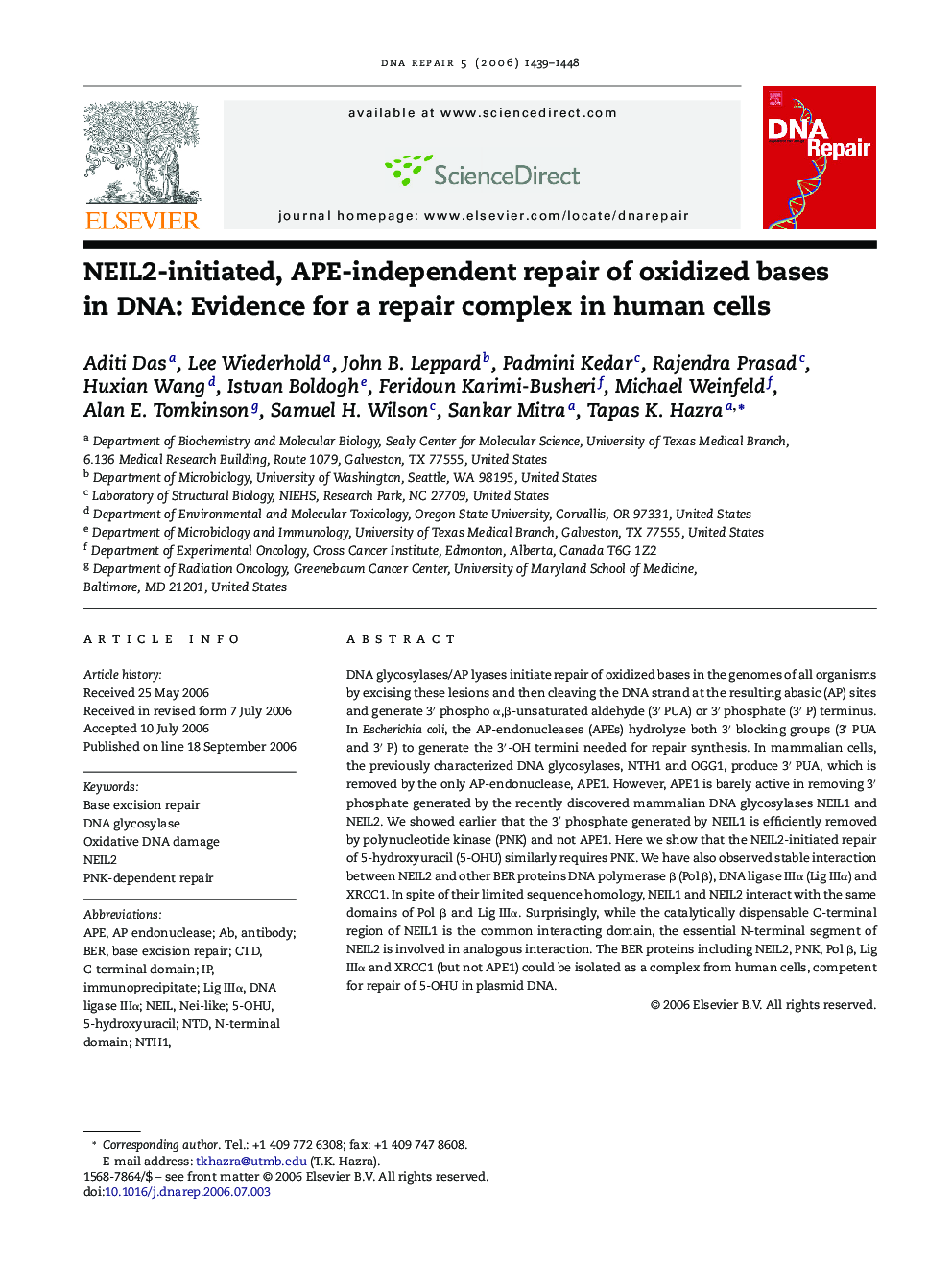| Article ID | Journal | Published Year | Pages | File Type |
|---|---|---|---|---|
| 1981481 | DNA Repair | 2006 | 10 Pages |
DNA glycosylases/AP lyases initiate repair of oxidized bases in the genomes of all organisms by excising these lesions and then cleaving the DNA strand at the resulting abasic (AP) sites and generate 3′ phospho α,β-unsaturated aldehyde (3′ PUA) or 3′ phosphate (3′ P) terminus. In Escherichia coli, the AP-endonucleases (APEs) hydrolyze both 3′ blocking groups (3′ PUA and 3′ P) to generate the 3′-OH termini needed for repair synthesis. In mammalian cells, the previously characterized DNA glycosylases, NTH1 and OGG1, produce 3′ PUA, which is removed by the only AP-endonuclease, APE1. However, APE1 is barely active in removing 3′ phosphate generated by the recently discovered mammalian DNA glycosylases NEIL1 and NEIL2. We showed earlier that the 3′ phosphate generated by NEIL1 is efficiently removed by polynucleotide kinase (PNK) and not APE1. Here we show that the NEIL2-initiated repair of 5-hydroxyuracil (5-OHU) similarly requires PNK. We have also observed stable interaction between NEIL2 and other BER proteins DNA polymerase β (Pol β), DNA ligase IIIα (Lig IIIα) and XRCC1. In spite of their limited sequence homology, NEIL1 and NEIL2 interact with the same domains of Pol β and Lig IIIα. Surprisingly, while the catalytically dispensable C-terminal region of NEIL1 is the common interacting domain, the essential N-terminal segment of NEIL2 is involved in analogous interaction. The BER proteins including NEIL2, PNK, Pol β, Lig IIIα and XRCC1 (but not APE1) could be isolated as a complex from human cells, competent for repair of 5-OHU in plasmid DNA.
